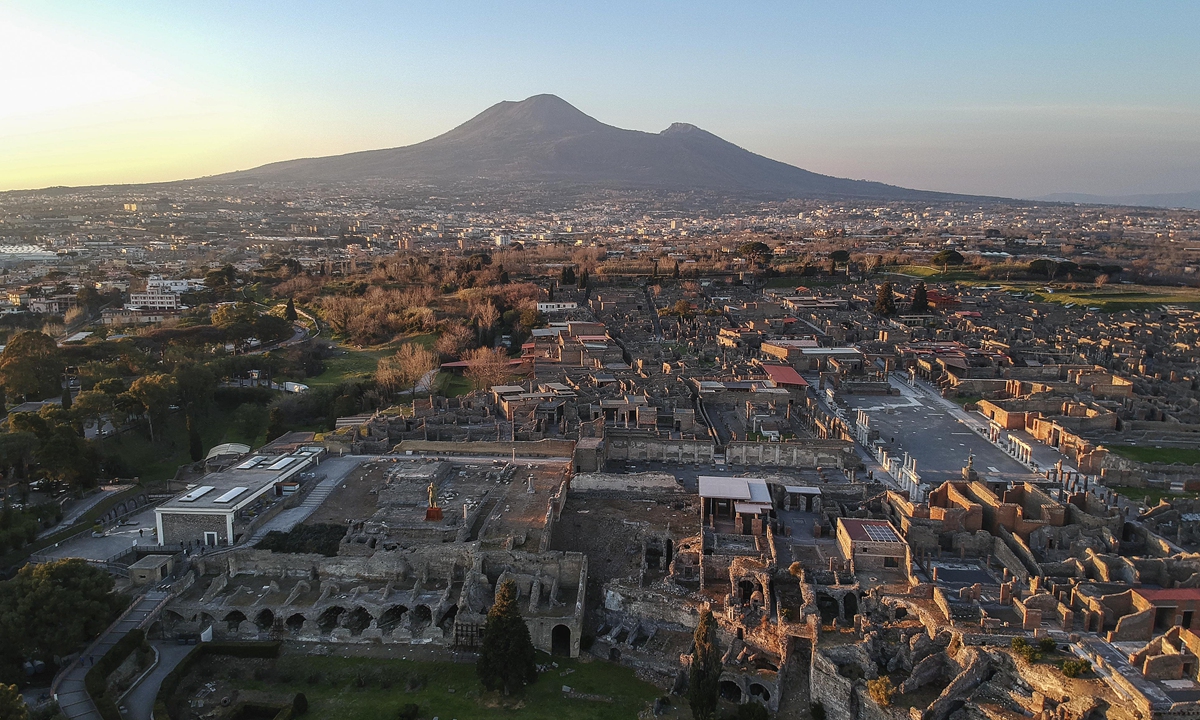Remains of two victims of 79 AD volcanic eruption unearthed at Pompeii
Source: AFP Published: 2020/11/22 18:23:40
The remains of two victims of the eruption of Mount Vesuvius almost 2,000 years ago have been unearthed at a grand villa on the fringes of Pompeii, officials at the archaeological site said on Saturday.

"Two skeletons of individuals caught in the fury of the eruption have been found," the officials at the Italian site near Naples said in a statement.
The researchers believe the figures are those of a young slave and a richer older man, around 40 and presumed to be his owner, based on the vestiges of clothing and their physical appearance.
The ruined city of Pompeii was submerged in ash after the eruption of Mount Vesuvius in AD79. It is now Italy's second-most visited tourist attraction after Rome's Colosseum, receiving nearly 4 million visits in 2019.
The massive site that spreads over 44 hectares is what remains of one of the richest cities in the Roman empire.
Layers of ash buried many buildings and objects in a nearly pristine state, including curled-up corpses of victims.
After the latest human remains were uncovered, the bones were analyzed and then plaster was poured in, a technique invented by Giuseppe Fiorelli in 1867.
This creates a plaster cast which shows the shapes of the bodies of the two victims, in a supine position, where they fell.
The two skeletons were found, during ongoing excavations at Civita Giuliana, around 700 meters northwest of Pompeii, at a villa overlooking the Bay of Naples where previously a stable and the remains of three harnessed horses had been found.
The two bodies were found in a side room of the "cryptoporticus," a corridor below the villa where the two victims could have gone to seek shelter.
While excavations continue at the Pompeii site, tourism has stopped due to coronavirus measures.
Newspaper headline: Two victims of volcanic eruption unearthed at Pompeii

Sunset view of excavations of Pompeii (ancient ruins), in southern Italy, Campania region on Febuary 21. Photo: VCG
"Two skeletons of individuals caught in the fury of the eruption have been found," the officials at the Italian site near Naples said in a statement.
The researchers believe the figures are those of a young slave and a richer older man, around 40 and presumed to be his owner, based on the vestiges of clothing and their physical appearance.
The ruined city of Pompeii was submerged in ash after the eruption of Mount Vesuvius in AD79. It is now Italy's second-most visited tourist attraction after Rome's Colosseum, receiving nearly 4 million visits in 2019.
The massive site that spreads over 44 hectares is what remains of one of the richest cities in the Roman empire.
Layers of ash buried many buildings and objects in a nearly pristine state, including curled-up corpses of victims.
After the latest human remains were uncovered, the bones were analyzed and then plaster was poured in, a technique invented by Giuseppe Fiorelli in 1867.
This creates a plaster cast which shows the shapes of the bodies of the two victims, in a supine position, where they fell.
The two skeletons were found, during ongoing excavations at Civita Giuliana, around 700 meters northwest of Pompeii, at a villa overlooking the Bay of Naples where previously a stable and the remains of three harnessed horses had been found.
The two bodies were found in a side room of the "cryptoporticus," a corridor below the villa where the two victims could have gone to seek shelter.
While excavations continue at the Pompeii site, tourism has stopped due to coronavirus measures.
Newspaper headline: Two victims of volcanic eruption unearthed at Pompeii
Posted in: EUROPE